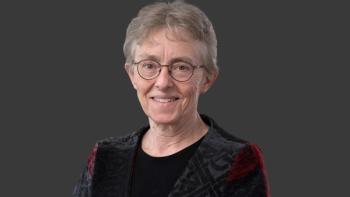
Terminal Cancer Patients in California Made Majority of Aid-In-Dying Drug Requests
Experience with the recently enacted California End of Life Option Act has shown that a high percentage of patients who requested aid-in-dying drugs in California have proceeded with ingesting the drugs. The majority of these requests were made by terminal cancer patients.
Experience with the recently enacted California End of Life Option Act (EOLOA) has shown that a high percentage of patients who requested aid-in-dying drugs in California have proceeded with ingesting the drugs, with the majority of these requests made by terminal cancer patients, according to the results of a research letter
Huong Q. Nguyen, PhD, RN, from the department of research and evaluation at Kaiser Permanente Southern California, and colleagues thought this increase in ingestion compared with a study of the Death With Dignity Act in Oregon may be due to a longer follow-up time.
California’s EOLOA had been in effect for more than a year. This legislation allows qualified adults diagnosed with a terminal disease to request aid-in-dying drugs from their physician. This law will sunset after a decade if no further legislation action is taken.
Under the legislation EOLOA coordinators provide assistance with navigation to patients, perform psychosocial assessments, serve as a resource for healthcare professionals, ensure the integrity of informed consent and compliance with legal requirements, and be available for staff debriefing after patient death.
In this study, Nguyen and colleagues described the experience with EOLOA at Kaiser Permanente Southern California using data from June 9, 2016 to June 30, 2017, with follow-up through August 20, 2017. During that time, 379 patients initiated an inquiry for aid-in-dying drugs. About one in five (21%) patients died or were too ill to proceed, 16% were ineligible, and 46% were eligible and proceeded with their first spoken request to an attending physician.
About three-quarters (74%) of patients who received the EOLOA drugs ingested them and died within a median of 9 days after the prescription was written. The researchers found no trend in the sociodemographic, clinical, or end-of-life characteristics of patients who completed the first oral request, proceeded to receive a prescription, and ingested the aid-in-dying drugs.
The most common disease in these patients was cancer (74%). About half of patients (55%) had an activities of daily living impairment and were on palliative care or hospice at the time of their inquiry.
In an
“Although Stanford committed to the referral of established patients to a physician willing to prescribe, the details of finding an alternate prescribing physician remain complicated owing to the perceived stigma of that role and the challenge of establishing care and prescribing for a patient of a colleague,” they wrote. In some instances, even deciding what constitutes conscientious objection has been a practical challenge. Healthcare institutions that participate in physician-assisted death under applicable state laws should develop appropriate mechanisms to review, evaluate, and provide real-time guidance to help address such challenges.”
Newsletter
Stay up to date on recent advances in the multidisciplinary approach to cancer.



















































































